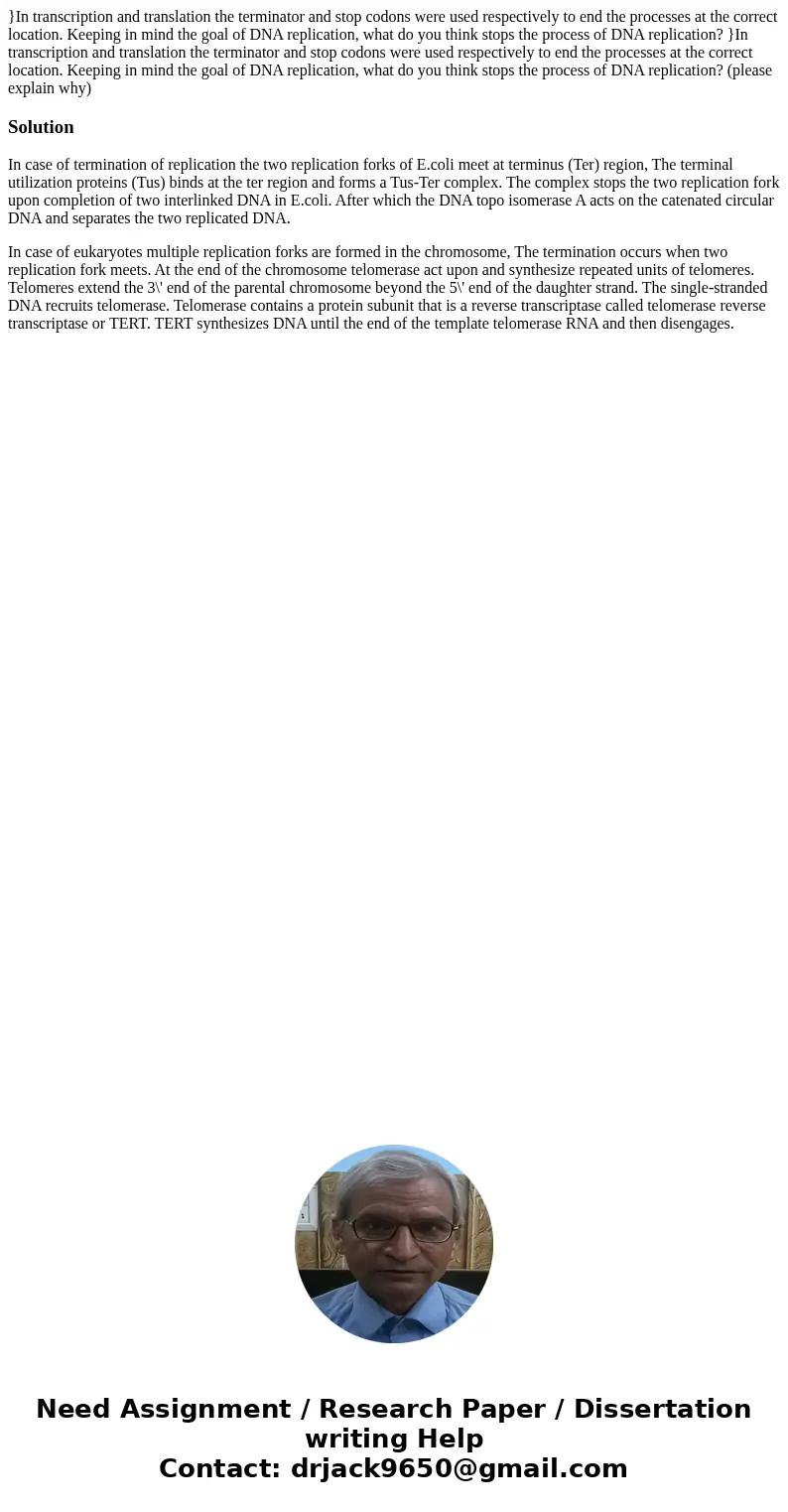In transcription and translation the terminator and stop cod
}In transcription and translation the terminator and stop codons were used respectively to end the processes at the correct location. Keeping in mind the goal of DNA replication, what do you think stops the process of DNA replication? }In transcription and translation the terminator and stop codons were used respectively to end the processes at the correct location. Keeping in mind the goal of DNA replication, what do you think stops the process of DNA replication? (please explain why)
Solution
In case of termination of replication the two replication forks of E.coli meet at terminus (Ter) region, The terminal utilization proteins (Tus) binds at the ter region and forms a Tus-Ter complex. The complex stops the two replication fork upon completion of two interlinked DNA in E.coli. After which the DNA topo isomerase A acts on the catenated circular DNA and separates the two replicated DNA.
In case of eukaryotes multiple replication forks are formed in the chromosome, The termination occurs when two replication fork meets. At the end of the chromosome telomerase act upon and synthesize repeated units of telomeres. Telomeres extend the 3\' end of the parental chromosome beyond the 5\' end of the daughter strand. The single-stranded DNA recruits telomerase. Telomerase contains a protein subunit that is a reverse transcriptase called telomerase reverse transcriptase or TERT. TERT synthesizes DNA until the end of the template telomerase RNA and then disengages.

 Homework Sourse
Homework Sourse